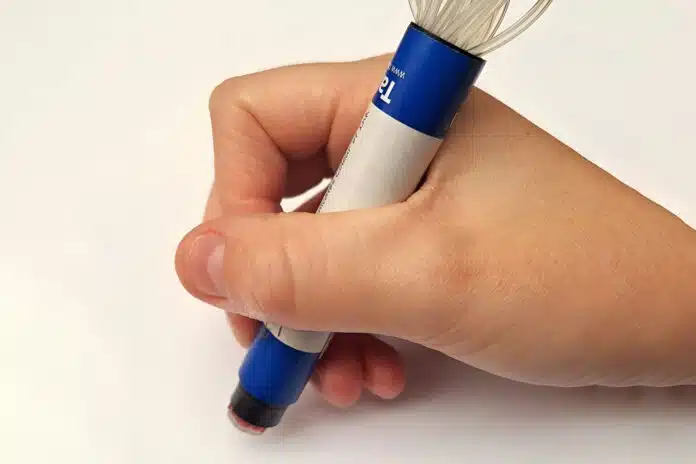
By Ashwini Sakharkar 4 Sep, 2024
Collected at: https://www.techexplorist.com/sensory-pen-transform-braille-english-text/89132/
A groundbreaking development has emerged from the University of Bristol: a revolutionary pen that transforms Braille into English text.
Despite the expressed desire of visually impaired individuals to learn Braille, a decline in Braille literacy is frequently reported. Braille literacy is a highly valued skill by those who are capable. This shortage of learning resources, especially outside urban areas, is often to blame.
A handheld device equipped with a one-centimeter sensor featuring 19 channels programmed to read Braille has shown remarkable accuracy in initial trials. This innovation holds great promise for empowering visually impaired individuals with enhanced access to information and education.
“This device, Braille-tip, was designed to aid people’s ability to learn independently, and will hopefully form part of the solution to increasing Braille literacy and allow people to reap the benefits of reading and writing,” Lead author Dr George Jenkinson explained.
Braille-tip is a compact soft tactile sensor that can be easily mounted on a standard pen to revolutionize the way we read and learn Braille. It is designed to dynamically assist with reading and learning Braille.
Dr. Jenkinson continued: “I used the handheld device to read multiple passages of Braille and analyzed how accurately it could process the tactile cues (Braille bumps) into English text.”
Utilizing fluid channels and 19 sensitive areas under a silicone membrane, this innovative sensor transmits tactile information to a single camera, delivering a sensory response that is calibrated to detect raised Braille dots with astonishing precision. Demonstrated to read Braille aloud with an impressive 84.5% success rate when operated by hand, Braille-tip is poised to transform accessibility for the visually impaired.
The real-time algorithm operates independently of training or deep learning, ensuring predictability, explainability, and portability to other tactile sensors. This creates a robust, easily modifiable codebase.
Braille represents a standardized and highly organized form of communication. Advanced reading techniques using both index fingers allow for efficient navigation, with one finger leading and the other checking and re-reading letters. Additionally, the introduction of a Braille tip enhances the learning experience for readers.
The team is dedicated to enhancing the device’s functionality for improved accuracy and ease of use.
“As soon as possible, the device should be tested with participants, and prototypes should be made available to the intended end-users so that their desires and the potential use for such a device can be assessed in earnest,” George added. “A co-design approach that involves users is much more likely to have a positive real-world impact than an approach siloed in the laboratory.
“The pattern of the errors suggest that they came from the way the device was held and operated, suggesting that the algorithm and sensor are likely to be able to reach much higher accuracy close to 100% if the design is improved.”
Braille is an essential feature in public spaces and on various devices such as transportation hubs, elevators, and ATMs to ensure accessibility for all individuals. Introducing a device capable of interpreting Braille characters found in these public areas would empower visually impaired individuals and those unfamiliar with Braille to interact more independently with their surroundings. This solution can significantly enhance accessibility and inclusivity for all members of the community.
Journal reference:
- George P Jenkinson, Andrew T Conn, Antonia Tzemanaki. Braille-tip: Structured Small-Footprint Tactile Sensor for High Acuity Dynamic Tactile Tasks.

Leave a Reply